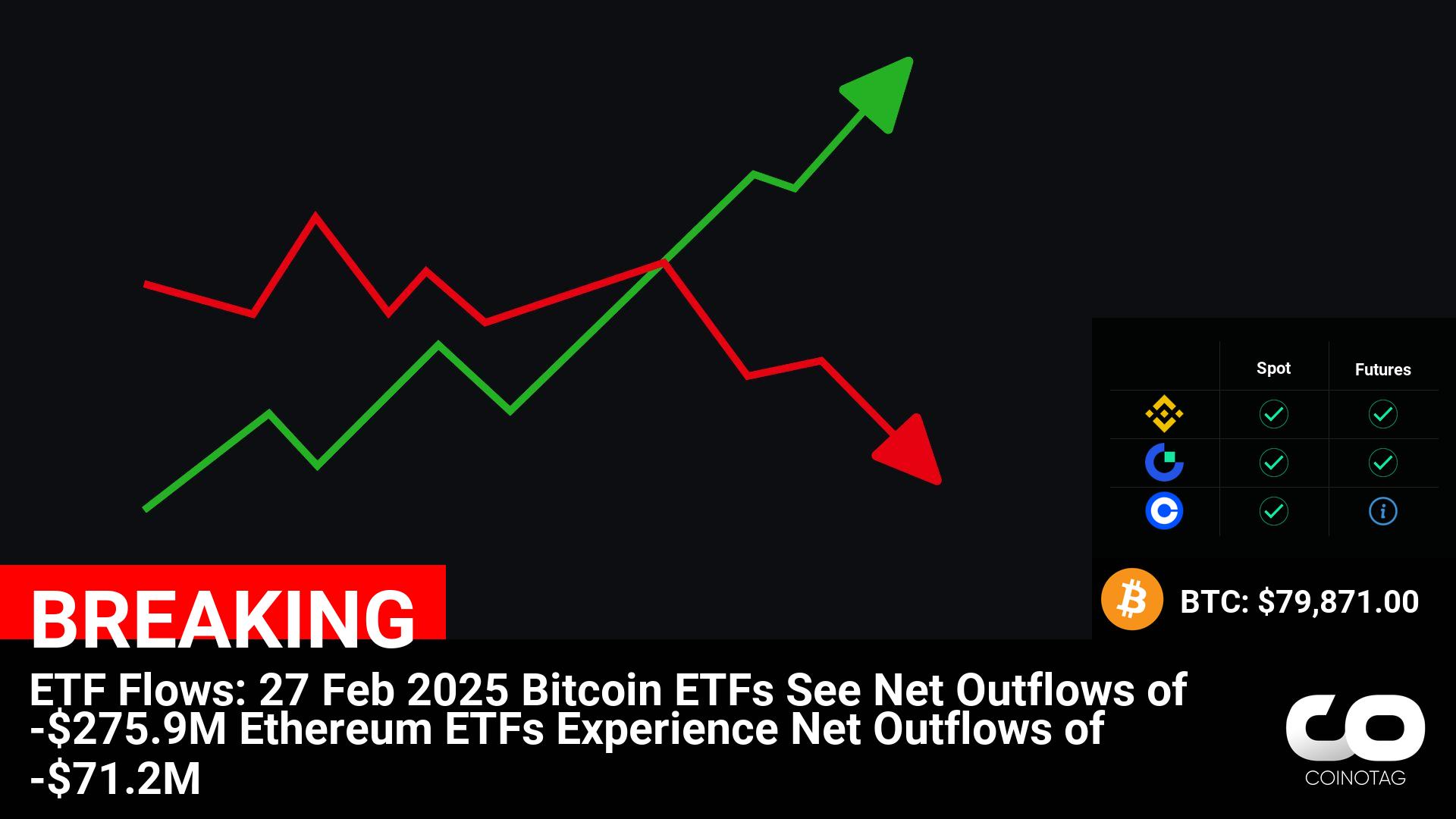
For decades, your investment portfolio has revolved around a key academic idea that hasn’t held up very well: efficient markets. There’s a direct line from the efficient markets theory of Eugene Fama in the 1960s to modern portfolio theory. It paved the way for index funds, a strategy that has not only weathered market cycles but also become the default for managing pensions and retirement accounts. As we step into a new era of digital finance, tokenized assets may offer a way to broaden our investment horizons in ways that traditional models have overlooked. The genesis of modern portfolio theory Index fund investing didn’t arise by chance. In the early 1970s, amid vigorous debates over market efficiency, Burton Malkiel’s seminal work advocating index funds in 1973 (in his book “A Random Walk Down Wall Street” ) was embodied in John Bogle’s launch of the Vanguard S&P 500 fund in 1975. This cemented a strategy that focused on broad diversification and minimal trading. Astonishingly, passive index-investing has triumphed around the world, even though the theory underpinning it, that investors are always rational, hasn’t held up well. Behavioral psychologists like Daniel Kahneman and Amos Tversky illuminated the flaws in our decision-making processes. This is highlighted in Daniel Kahneman’s award winning book, “Thinking Fast and Slow.” In the ensuing decades, economists have reconciled efficient markets and irrational behavior into the concept of “pretty good markets.” Aggregated wisdom in the form of prices trends towards being right, over time, though from day to day and case to case there are significant gaps that investors can exploit. Index funds have held up well because exploiting those opportunities is hard to do consistently or cheaply. At the same time, the regulatory framework governing institutional investing reinforces this reliance on proven strategies. Fund managers operate under strict fiduciary duties that require them to prioritize client interests and mitigate risk. As a result, they allocate the bulk of their portfolios to assets with long, established track records, typically government bonds and passive equity funds. In short, the criteria for “acceptable” investments aren’t driven solely by potential returns; they are fundamentally tied to data history, reliability, and transparency. In case you were wondering, that means index funds. In this environment, venturing into uncharted territory is not taken lightly. New asset classes, no matter how promising, are initially sidelined because they lack the long-term, daily data that makes them viable for inclusion in a fiduciary portfolio. Until now, almost all portfolio theory has been based on U.S. equities and government bonds. Although that universe has expanded over time to include index funds and bonds from other large economies, it still represents only a relatively small portion of the world’s assets. Portfolios are constrained at the intersection of regulations and data. And that’s all going to change. Tokenization: Expanding the universe of investable assets Tokenization and on-chain transactions don’t just offer a scalable way to package any kind of asset. They also offer a path to transparent, comparable data on asset values. By representing real-world assets, whether it’s Thai real estate, Nigerian oil leases, or New York taxi medallions as digital tokens on a blockchain, we can begin to generate the kind of daily, market-derived data that has traditionally been reserved for a narrow set of assets. Consider a simple question: How much Thai real estate should feature in a diversified retirement portfolio? Under current models, the answer is obscured by a lack of reliable, continuous pricing data. But if Thai real estate were tokenized, establishing an on-chain market with daily closing prices, it could eventually be measured against the same metrics used for U.S. equities. In time, this would force a re-examination of the static, index-based approach that has dominated investment strategy for so long. The implications for global finance Right now, alternative strategies – as pension fund managers refer to anything that isn’t a stock or bond index – comprise no more than 15–20% of most funds. Changing academic data on investment options would put the other 80% up for grabs. Imagine a future where a truly diversified portfolio isn’t limited by the confines of traditional equity and debt markets. With tokenization, investors from large institutional funds to individual savers could gain exposure to asset classes and geographic regions previously ignored due to data scarcity or illiquidity. The principles that underpin modern portfolio theory wouldn’t be discarded. Rather, they would be expanded upon to include a broader range of risk and return profiles. As tokenized assets build track records, fiduciaries, who today favor the predictability of bonds and index funds, might find themselves compelled to recalibrate their strategies. It’s not that the pretty good market hypothesis will be rendered obsolete. Instead, the parameters of what constitutes “efficient” may widen considerably. A richer dataset could lead to better-informed risk assessments and, ultimately, to portfolios that capture a more accurate picture of global value. A Measured but inevitable shift This isn’t going to happen overnight. The fastest we’re likely to see changes emerge is about a decade, assuming time to build a wide portfolio of tokenized assets and 5-7 years to build a daily information track record. Once the data is present, however, change could come quickly, thanks to widespread use of artificial intelligence. One thing that often slows the spread of change is a lack of intellectual bandwidth on the part of fund managers and consumers to adapt to new data. It took about 40 years to move pension fund investors from a 95%+ bonds model in the 1950s to a majority equity index fund model in the 1990s. It took about 30 years for index funds to become the dominant equity investment vehicle after the evidence showed they were the best option. In a world of AI-driven automated investment tools, the transition might happen a whole lot faster. And with hundreds of trillions of dollars in assets under management, every percentage point change in allocation strategy is a little tsunami of change by itself. We’ll also be hosting a free session on the place digital assets will have in portfolios at the upcoming EY Global Blockchain Summit, 1 -3 April .
CoinDesk
You can visit the page to read the article.
Source: CoinDesk
Disclaimer: The opinion expressed here is not investment advice – it is provided for informational purposes only. It does not necessarily reflect the opinion of BitMaden. Every investment and all trading involves risk, so you should always perform your own research prior to making decisions. We do not recommend investing money you cannot afford to lose.
Cardano Whales Dump 170M Tokens as Price Drops to $0.65

Cardano (ADA) has witnessed a major sell-off by large holders, with over 170 million tokens being offloaded. This sell-off led to a drop in total whale holdings from 3.26 billion ADA to 2.98 billion ADA, aligning with a price decline from $0.83 to $0.65. The move suggests bearish sentiment among major investors, possibly anticipating further … Continue reading "Cardano Whales Dump 170M Tokens as Price Drops to $0.65" The post Cardano Whales Dump 170M Tokens as Price Drops to $0.65 appeared first on Cryptoknowmics-Crypto News and Media Platform . CoinDesk

FBI Links $1.5 Billion Bybit Hack to North Korea’s Lazarus Group
The Federal Bureau of Investigation (FBI) has officially attributed the recent $1.5 billion cyberattack on cryptocurrency exchange Bybit to North Korea’s state-sponsored Lazarus Group. The attack, which occurred on February 21, saw hackers infiltrate one of Bybit’s cold wallets and steal over 41,000 ETH. This breach added to a growing list of high-profile cryptocurrency heists orchestrated by North Korean hacking entities. US Authorities Sound Alarm on North Korea’s Crypto Heists In a joint Cybersecurity Advisory (CSA) issued by the FBI, the Cybersecurity and Infrastructure Security Agency (CISA), and the US Treasury Department, authorities warned about the increasing cyber risks posed by North Korea-backed advanced persistent threat (APT) groups. The Lazarus Group, also known by aliases such as APT38, BlueNoroff, and Stardust Chollima, has been conducting cyber theft operations since at least 2020. The entity has been known for systematically targeting cryptocurrency exchanges, decentralized finance (DeFi) protocols, play-to-earn gaming platforms, as well as venture capital firms investing in digital assets. The advisory outlined the group’s tactics, which include social engineering, spearphishing campaigns, and the deployment of trojanized cryptocurrency applications to infiltrate networks and exfiltrate funds. According to US authorities, North Korean hackers use sophisticated malware strains, including the notorious AppleJeus malware, to compromise cryptocurrency platforms. These cyber actors frequently exploit vulnerabilities in financial technology firms and blockchain infrastructure to launder stolen digital assets, ultimately funneling funds back to the North Korean regime. “TraderTraitor” The Bybit hack follows a familiar pattern, with attackers using deceptive recruitment tactics to lure employees into downloading compromised trading applications, referred to as “TraderTraitor.” These applications are designed with cross-platform JavaScript and Node.js to make them appear legitimate but contain hidden malware that allows attackers to gain unauthorized access to private keys and initiate fraudulent blockchain transactions. With North Korea’s cyber theft operations continuing to escalate, the US government has reiterated its commitment to combating illicit activities in the cryptocurrency sector. The FBI urges cryptocurrency firms to strengthen cybersecurity measures, monitor for indicators of compromise (IOCs), and implement robust security protocols to mitigate risks associated with North Korean-backed cyber threats. The post FBI Links $1.5 Billion Bybit Hack to North Korea’s Lazarus Group appeared first on CryptoPotato . CoinDesk











